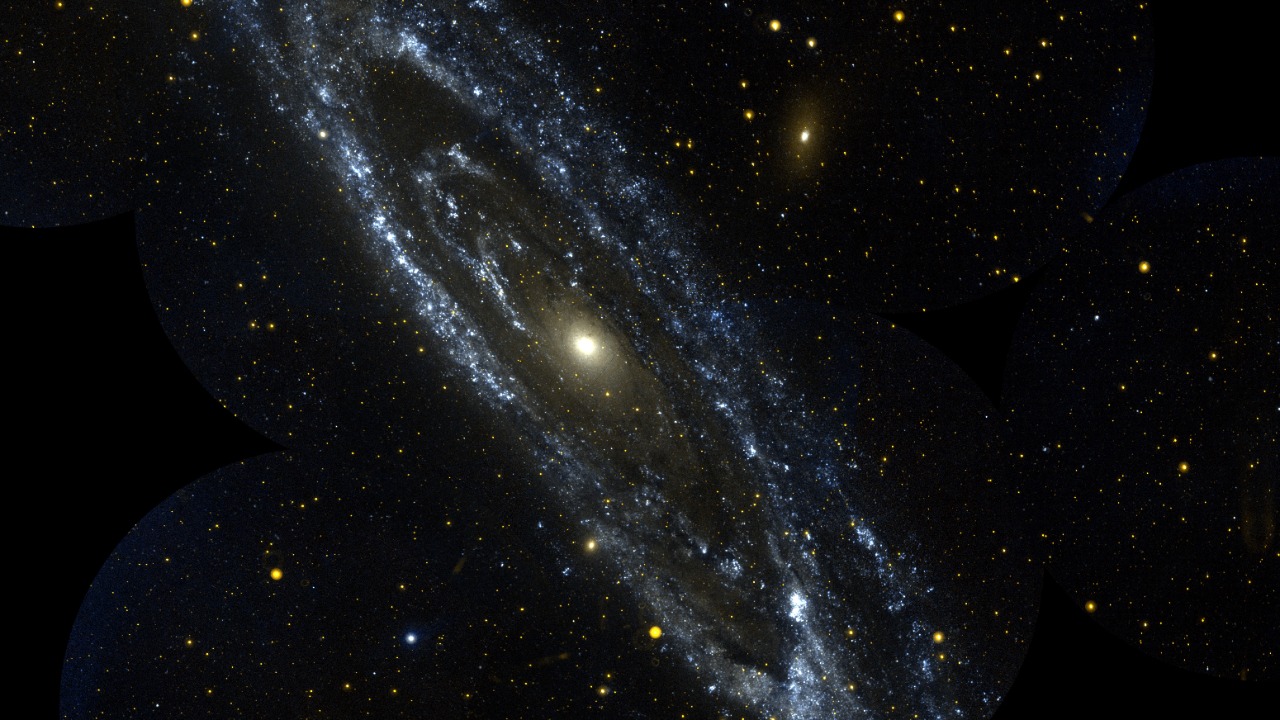
The James Webb Space Telescope has provided groundbreaking insights into the chaotic nature of early universe galaxies, revealing that these “messy” galaxies struggled to settle into stable forms. Recent observations have shed light on the turbulent processes that characterized these primordial structures, offering a clearer understanding of their behavior. Complementing these findings, a cosmic signal from the very early universe promises to aid astronomers in detecting the first stars, further enriching our comprehension of cosmic evolution.
James Webb Space Telescope Observations
The James Webb Space Telescope has been instrumental in unveiling the chaotic nature of galaxies in the early universe. On October 21, 2025, Webb’s observations highlighted the disordered state of these galaxies, which appeared to be in a constant struggle to achieve stability. This revelation underscores the telescope’s role in capturing the intricate details of galactic formation during the universe’s infancy. The data collected by Webb confirms that these early galaxies were far from the orderly structures we observe today, instead exhibiting a tumultuous and dynamic nature as reported.
Further confirmation of these findings emerged on October 22, 2025, when additional observations solidified our understanding of the structural and behavioral characteristics of these early galaxies. The evidence suggests that the galaxies’ inability to settle was a defining feature of their existence, marking a significant departure from the more stable forms seen in the current universe. This understanding is crucial for astronomers as it provides a baseline for comparing the evolutionary trajectories of galaxies over billions of years according to reports.
Characteristics of Messy Early Galaxies
The “messy” nature of early universe galaxies is characterized by their irregular shapes and chaotic internal dynamics. Observations from October 21, 2025, reveal that these galaxies lacked the defined structures typically associated with mature galaxies, such as spiral arms or elliptical forms. Instead, they appeared as amorphous collections of stars and gas, constantly in flux. This chaotic state is indicative of the intense gravitational interactions and rapid star formation processes that dominated their early development as detailed.
On October 22, 2025, further insights into these galaxies’ characteristics were provided, highlighting their instability and disorder. The galaxies were subject to frequent mergers and interactions, which contributed to their unsettled state. These processes not only influenced their physical appearance but also affected their internal dynamics, leading to a constant reshuffling of stars and gas. This chaotic behavior is a testament to the complex and violent nature of the early universe, where galaxies were in a perpetual state of formation and reformation as observed.
Challenges in Galaxy Settling
The struggle of early galaxies to settle into stable forms can be attributed to several factors. The data from October 21, 2025, suggests that the high density of matter in the early universe led to frequent gravitational interactions between galaxies. These interactions often resulted in mergers, which disrupted the galaxies’ structures and prevented them from achieving stability. Additionally, the rapid rate of star formation within these galaxies contributed to their chaotic nature, as the energy released by newly formed stars further destabilized their environments as reported.
On October 22, 2025, it was revealed that environmental factors also played a significant role in the unsettled state of these galaxies. The presence of intergalactic gas and dark matter influenced their dynamics, adding another layer of complexity to their formation processes. These factors, combined with the inherent instability of the early universe, created a challenging environment for galaxies to settle into stable forms. Understanding these dynamics is crucial for astronomers as it provides insights into the conditions that shaped the universe’s evolution as detailed.
Cosmic Signals and First Stars Detection
A significant development in our understanding of the early universe comes from the identification of a cosmic signal on June 20, 2025. This signal, originating from the very early universe, holds the potential to help astronomers detect the first stars. The detection of these primordial stars is a crucial step in unraveling the mysteries of cosmic evolution, as they represent the building blocks of galaxies and larger cosmic structures as reported.
The implications of this cosmic signal extend beyond the detection of the first stars. It provides a window into the conditions that prevailed during the universe’s infancy, offering clues about the processes that led to the formation of galaxies. By studying this signal, astronomers can gain a deeper understanding of the factors that influenced the evolution of galaxies and the universe as a whole. This knowledge is essential for constructing accurate models of cosmic history and predicting the future trajectory of the universe as detailed.